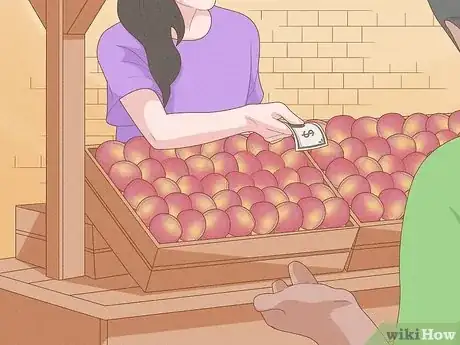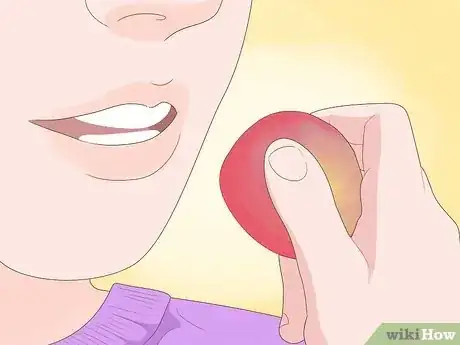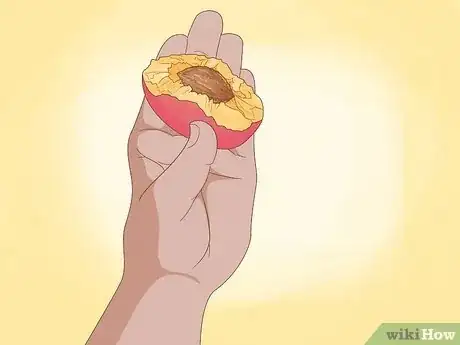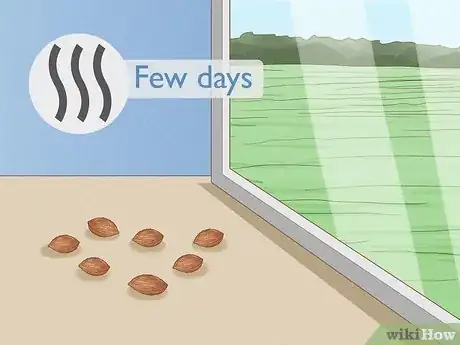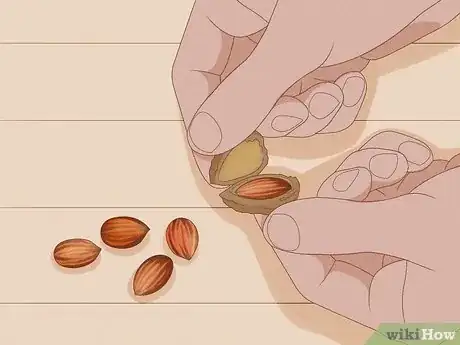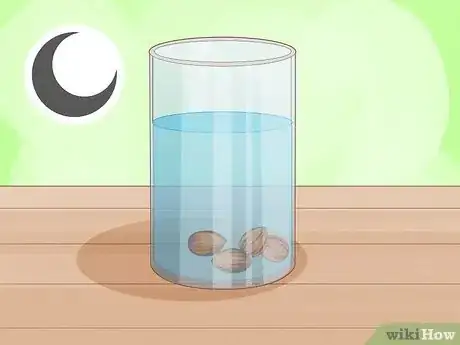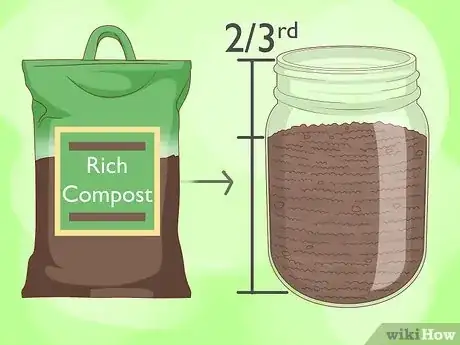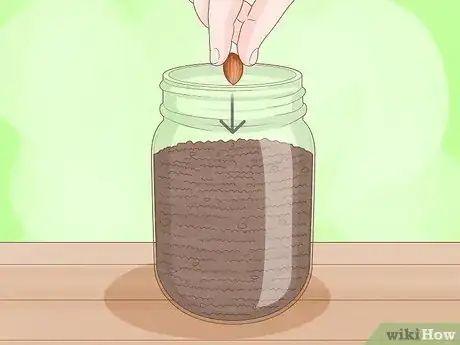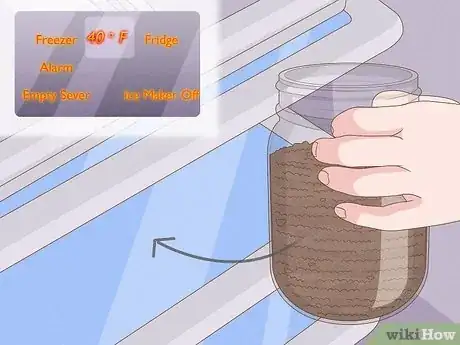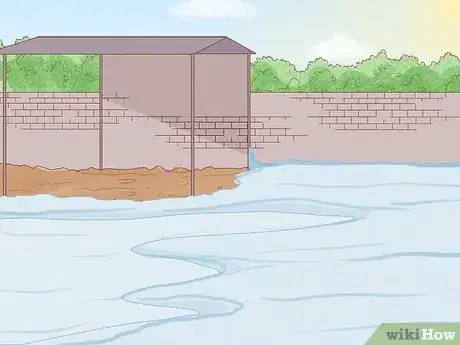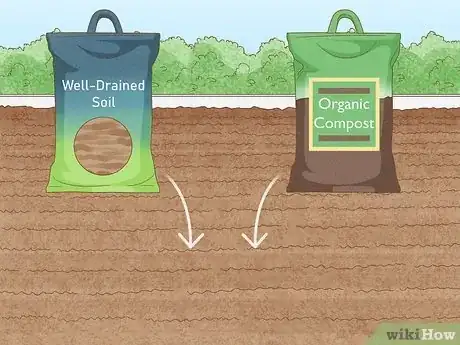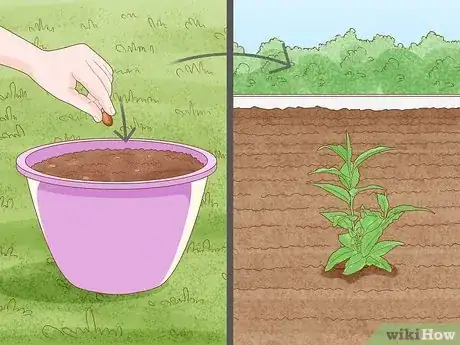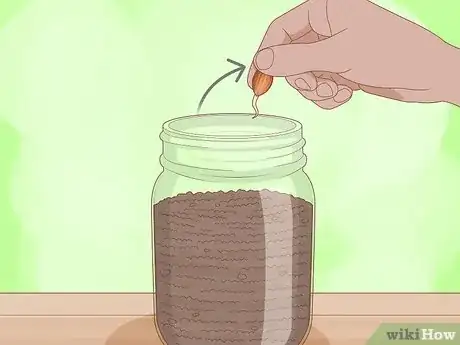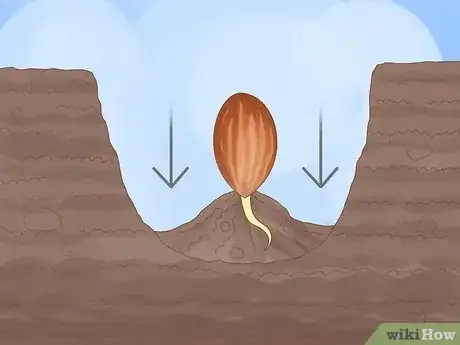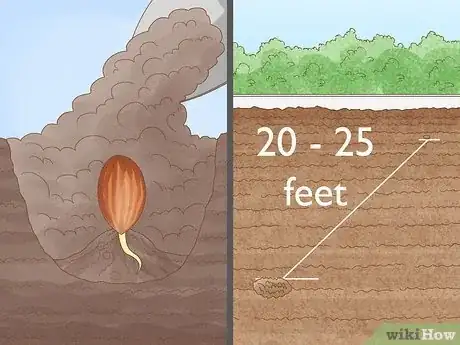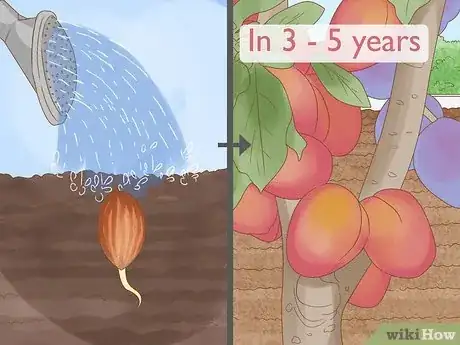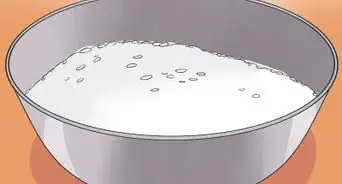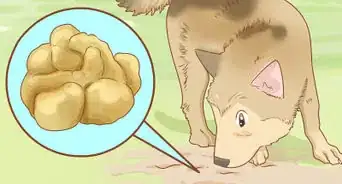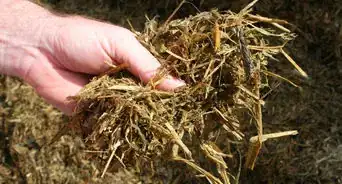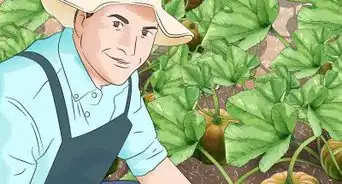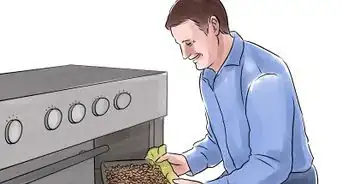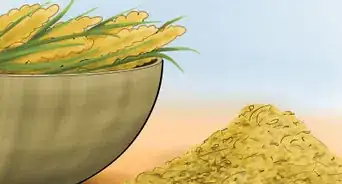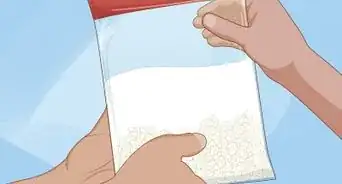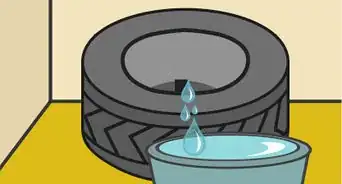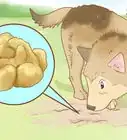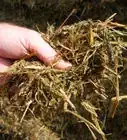This article was co-authored by Rachel Guffey. Rachel Guffey is a Plant Specialist and the Owner of Jungle House, a house plant shop based in Lawrence, Kansas. She specializes in plant education and caring for indoor plants. Rachel is passionate about using plants to help combat seasonal depression. She aims to make plants feel more accessible and approachable to everyone. Rachel has owned over 500 plants at one time.
There are 8 references cited in this article, which can be found at the bottom of the page.
wikiHow marks an article as reader-approved once it receives enough positive feedback. This article has 17 testimonials from our readers, earning it our reader-approved status.
This article has been viewed 268,056 times.
A plum is a type of stone fruit that carries its seed inside a pit in the core of the fruit. Seeds can be harvested from most market varieties, and then undergo a process called “stratification.” Once germinated the seed can be planted outdoors or in a container.
Steps
Harvesting the Seed
-
1Purchase ripe plums from a market stall. Buy plums that were grown locally or in a similar climate, so that you ensure it will grow in your hardiness zone. It is best not to use early-maturing varieties, because the seeds are less likely to develop in these types.[1]
-
2Eat the flesh off the plum. Choose the tastiest one to try to plant, since plum seeds often carry on the traits of a parent plant very well.Advertisement
-
3Continue to remove all the flesh so that the pit looks bare.
-
4Set the pit out on a windowsill for a few days to dry. The seed inside the pit will dry and shrink away, and you will be able to save it more easily. The shell will also crack more easily when dried.[2]
-
5Take a small nutcracker. Place the pit horizontally between the two ends. Crack it gently.[3]
- Take care not to crack too hard. A smashed seed can’t be planted.
-
6Set the almond-like seed off to the side. This is what you need to sprout and plant.
-
7Fill a glass of water. Drop your seed into it. If it sinks, you can germinate it, and if it floats, you should continue cracking pits until you get a viable seed.[4]
Sprouting the Seed
-
1Soak the seeds overnight in the glass of water that you just filled.[5] Use room temperature water.
-
2Fill a plastic bag or a canning jar two-thirds full of rich compost. Wet the soil so that it is moist, but not overly wet.
-
3Place the seed or seeds inside the compost and seal the plastic bag or jar. Shake the container so that the seed moves deeper into the loose soil.
-
4Turn your refrigerator to about 40 degrees Fahrenheit (4 Celsius). Place the jar or bag in the refrigerator to start the stratification process. This cool, sprouting process germinates the seeds so that they can be planted and grown into a tree.[6]
Planting the Seed
-
1Choose a permanent place in your yard to plant your plum trees. It is recommended that you plant at least two trees so that cross-pollinating varieties will come to fruit.[9]
-
2Pick a place that can be frost protected. Choose a slightly sheltered place that you can mulch and cover to avoid frost—a killer of young plum trees. It will need to be in full sun.
-
3Bring in plenty of well-drained soil and compost before you plant. Adding soil will also help it drain better.
-
4Opt to plant in a large pot and transplant later of if you are unsure where to plant the tree. It should be a deep pot with drainage holes.
-
5Remove the seed from the jar or bag once healthy, white roots form. Take care not to break these roots when transplanting.
-
6Dig a small hole that is a few inches deeper than the roots. Create a small mound of soil in the center. Place the seed atop it and spread the roots around the mound.
-
7Cover the planted seed with soil. Space your trees about 20 to 25 feet (6 to 7.6m) apart.[10]
-
8Water the space and protect it well. Water deeply before the ground dries out. Your plum tree should start bearing fruit in three to five years.
Community Q&A
-
QuestionCan these be planted straight out of the pits?
 Community AnswerNot nearly as successfully. Leave it half-covered in water until roots have emerged, then proceed to plant it, leaving it close to the surface.
Community AnswerNot nearly as successfully. Leave it half-covered in water until roots have emerged, then proceed to plant it, leaving it close to the surface. -
QuestionMy plum tree is in a pot and 1 foot high. Should I now plant it in the garden?.
 Community AnswerYes, it will need to go there soon anyway. As long as it is big enough to survive the winter, you'll be fine.
Community AnswerYes, it will need to go there soon anyway. As long as it is big enough to survive the winter, you'll be fine. -
QuestionCan plum seeds be planted in tropical countries where there isn't really a winter?
 Community AnswerYou can plant them and they might grow, but plums and other stone fruits require the cold to activate the enzymes needed for the seed to sprout. The trees also require a period of cold dormancy in order to set fruit. The tree might survive for a year, maybe two, then die.
Community AnswerYou can plant them and they might grow, but plums and other stone fruits require the cold to activate the enzymes needed for the seed to sprout. The trees also require a period of cold dormancy in order to set fruit. The tree might survive for a year, maybe two, then die.
Things You'll Need
- Local, ripe plums
- Glass of water
- Nutcracker
- Compost
- Plastic bag/Sealable jar
- Water
- Refrigerator
- Soil
- Spade
- Deep, well-drained pot
References
- ↑ https://www.thekitchn.com/3-signs-peaches-and-plums-are-ripe-and-ready-to-eat-234741
- ↑ http://www.motherearthnews.com/organic-gardening/growing-fruit-trees-zmaz08jjzmcc.aspx#axzz3FamSCRlU
- ↑ https://extension.psu.edu/hobbiest-gardening-growing-fruit-tree-plants-from-seed
- ↑ https://www.youtube.com/watch?v=eQr4WIbJskU
- ↑ https://extension.psu.edu/hobbiest-gardening-growing-fruit-tree-plants-from-seed
- ↑ https://extension.psu.edu/hobbiest-gardening-growing-fruit-tree-plants-from-seed
- ↑ https://peppershomeandgarden.com/how-germinate-plum-seed/
- ↑ https://peppershomeandgarden.com/how-germinate-plum-seed/
- ↑ https://www.almanac.com/plant/plums
